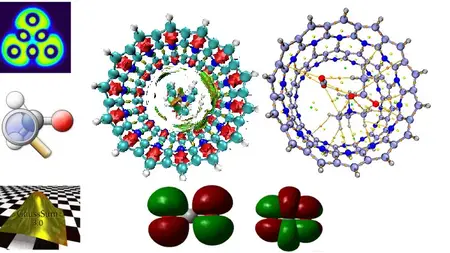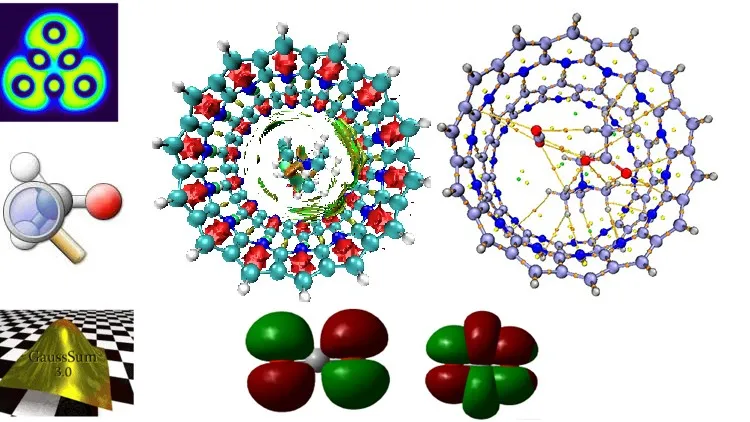Density Functional Theory (DFT): Theory & Simulation
Last updated 7/2025
Duration: 7h 38m | .MP4 1280x720 30 fps(r) | AAC, 44100 Hz, 2ch | 3.58 GB
Genre: eLearning | Language: English
Last updated 7/2025
Duration: 7h 38m | .MP4 1280x720 30 fps(r) | AAC, 44100 Hz, 2ch | 3.58 GB
Genre: eLearning | Language: English
Learn the theory of DFT and perform real quantum chemistry simulations using DFT step-by-step.
What you'll learn
- Understand the theoretical foundations of Density Functional Theory (DFT) including fundamental theorems, exchange-correlation and classification of DFT methods
- Perform DFT simulations for molecules and materials and analyze the results including energies, optimized geometries, HOMO-LUMO gaps, and molecular properties
- Apply DFT confidently in research and real-world problems by running calculations in Gaussian software and analyzing through Multiwfn, VMD and GaussView
- Select suitable functionals, basis sets, and computational parameters. Understand the limitations and accuracy of DFT compared to other methods
- Develop the confidence to apply DFT in academic research, industrial R&D, or advanced studies by through analysis of DFT methods in published research articles
Requirements
- No experience is required. You will learn everything here in this course
Description
This course offers acomprehensive introduction to Density Functional Theory (DFT), one of the most widely used quantum chemistry methods in bothacademic research and industry. It is thoughtfully designed forstudents, researchers, and professionalsinchemistry, physics, materials science, and nanotechnologywho wish to develop a deep understanding of DFT from both atheoretical and practical perspective.
The course covers thetheoretical foundationsof DFT, starting with key concepts such aselectron density, theHohenberg-Kohn theorems,Thomas-Fermi energy,Kohn-Sham equations,exchange-correlation functionals, and the role ofbasis sets. These core principles are explained in an accessible way, ensuring that learners build a strong conceptual foundation.
Moving beyond theory, the course offersstep-by-step guidance on performing DFT simulationsusingGaussian, a widely used quantum chemistry software. You will learn how toset up calculations,select appropriate functionals and basis sets, andrun simulations efficiently. Moreover, you will master how tointerpret simulation outputs, includingoptimized geometries,total energies,molecular orbitals,HOMO-LUMO gaps, andvibrational frequencies, using visualization and analysis tools such asGaussView,Multiwfn, andVisual Molecular Dynamics (VMD).
A unique feature of this course is itsstructured, analysis-based organization. All calculations are grouped according to the type ofscientific analysisthey serve. For example, a dedicated section coversnon-covalent interaction analysis, guiding you through a full workflow that includesinteraction energy calculations,basis set superposition error (BSSE) correction,energy decomposition analysis (EDA),noncovalent interaction index (NCI), andQuantum Theory of Atoms in Molecules (QTAIM)analysis. This approach helps you understand how different computational tools complement each other to provide a complete picture of molecular interactions.
The same logical structure is applied to other key areas such asnonlinear optical (NLO) properties,electronic structure analysis, andspectroscopic property predictions. Each section combinestheoretical explanationswithpractical demonstrations, ensuring that you not only learn how to perform simulations but also how to derivemeaningful chemical and material insightsfrom your results.
In addition to technical skills, this course also focuses ondeveloping your ability to critically analyze DFT methodologies as applied in published research papers. You will learn how to assess the choice of functionals, basis sets, and computational strategies used in the literature, helping you to both understand current research and improve your own computational studies.
This course is designed to makecomplex quantum mechanical concepts approachable, while providinghands-on experiencewith real molecular and material systems. Whether you're just beginning your journey in computational chemistry or looking to enhance your research capabilities, this course equips you with theknowledge, practical skills, and critical thinkingneeded to apply DFT confidently inacademic research, industrial R&D, or advanced study.
No prior experience with quantum chemistry software is required—everything is taught from the ground up. By the end of this course, you will be capable of performingaccurate DFT simulations, analyzing molecular and material properties, and interpreting computational results with confidence, empowering you to tackle real-world scientific challenges and contribute effectively to cutting-edge research.
Who this course is for:
- Beginners who are inspired by DFT but dont know how to learn and apply DFT in their research
More Info



